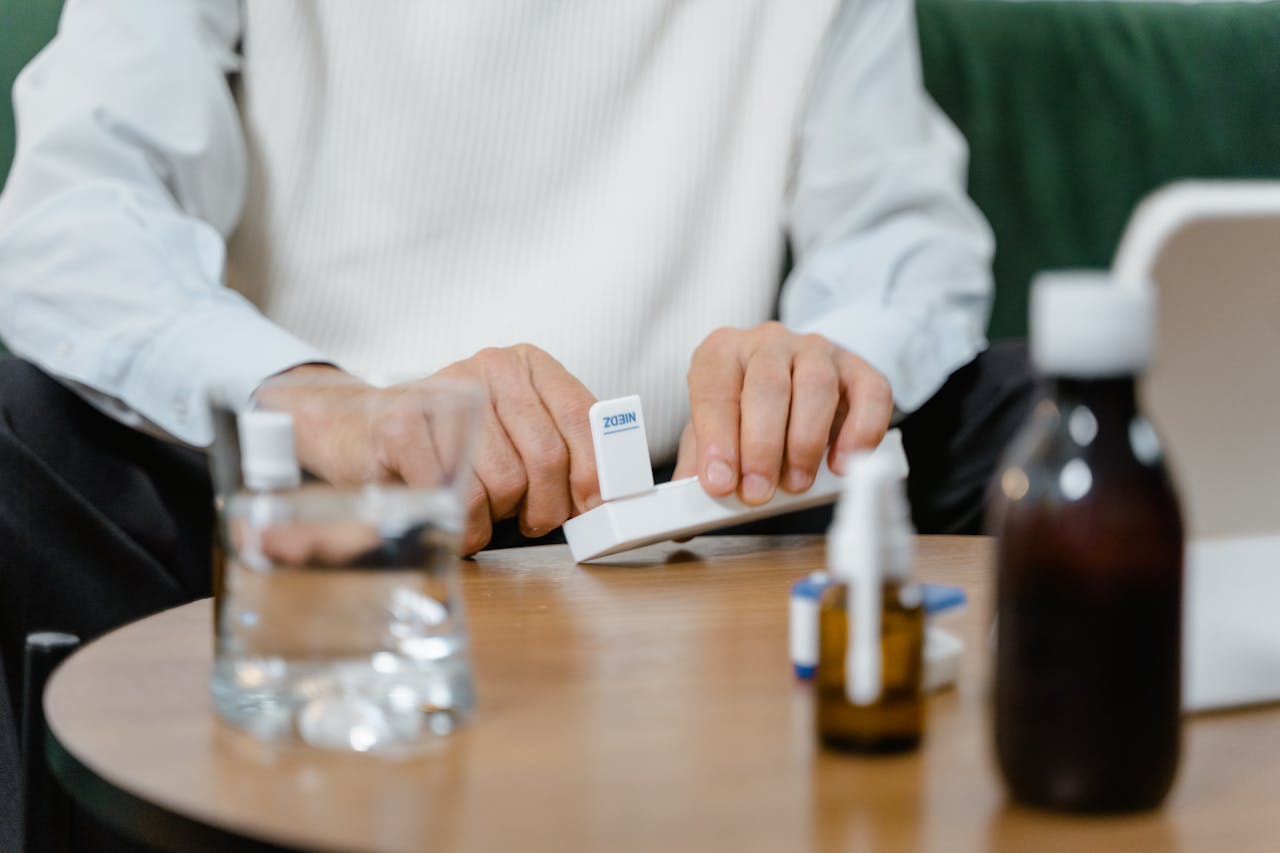Suboxone, a combination of buprenorphine and naloxone, is a medication commonly used for opioid dependence treatment. It works by reducing withdrawal symptoms and cravings, which can significantly help individuals on their path to recovery. However, finding the correct dosage is critical to the success of Suboxone therapy. If the dose is too low, it may not be effective, and the patient may still experience withdrawal symptoms or cravings.
Recognizing the signs that a Suboxone dose might be inadequate is an integral part of managing opioid dependence treatment. Some patients might notice persistent withdrawal symptoms, a return of cravings for opioids, or even a lack of improvement in their overall well-being. These indications signify that the current dose might not be sufficient. It’s essential for healthcare providers to assess the effectiveness of the dose and make necessary adjustments. Factors such as metabolism, the severity of dependence, and external stressors can influence the dosage needs and should be considered in the evaluation process.
Key Takeaways
- Suboxone is used to treat opioid dependence, but the correct dose is crucial for effectiveness.
- Signs of an inadequate dose include withdrawal symptoms, cravings, or lack of well-being.
- Healthcare providers must evaluate and adjust the dosage based on several individual factors.

I am a Nurse Practitioner licensed across multiple states, with experience in cardiology, nephrology, and family medicine. My current focus is on primary care, where I advocate for a holistic approach to healthcare, often recommending functional medicine to patients when suitable.
Understanding Suboxone Therapy
Suboxone therapy is a critical component in the treatment of opioid dependency, providing a balance between curbing withdrawal symptoms and reducing the potential for misuse.
Purpose of Suboxone
Suboxone therapy is designed to serve two main functions in the treatment of opioid addiction. First, it reduces withdrawal symptoms, which can be a significant barrier to recovery. Second, it acts as a deterrent for ongoing opioid misuse. Its unique properties allow individuals to step down their use of opioids in a controlled manner, with the ultimate goal being abstinence or stabilization.
Suboxone Components and Mechanisms
Suboxone comprises two primary ingredients: buprenorphine and naloxone. Buprenorphine is a partial opioid agonist that attaches to opioid receptors in the brain, producing enough activation to alleviate withdrawal symptoms without the full opioid effect that leads to euphoria and potential abuse. Naloxone, on the other hand, is an opioid antagonist that precipitates withdrawal if Suboxone is injected, serving as a safety mechanism to discourage misuse.
- Buprenorphine:
- Attachment to opioid receptors
- Reduction of cravings and withdrawal
- Naloxone:
- Blocks effects when injected
- Safeguard against abuse
Indications of Suboptimal Dosage
When a patient’s Suboxone dose is too low, there are clear physical and psychological indicators. These symptoms suggest that the medication is not fully addressing the opioid dependency, which may necessitate a dosage evaluation by a healthcare professional.
Physical Symptoms
- Increased Cravings: Patients may experience a resurgence in opioid cravings, signaling that the buprenorphine component is not sufficiently occupying the brain’s opioid receptors.
- Withdrawal Symptoms: Symptoms such as sweating, shaking, nausea, and diarrhea may occur, as Suboxone may not be adequately preventing withdrawal effects from prior opioid use.
Psychological Symptoms
- Anxiety and Irritability: Those on a suboptimal Suboxone dose can exhibit heightened feelings of anxiety or become notably irritable.
- Inability to Concentrate: Difficulty in focusing on tasks at hand may become apparent if the Suboxone dose is insufficient.
Assessing the Dose Effectiveness
When determining the effectiveness of a Suboxone dose, healthcare providers rely on a combination of clinical evaluation and patient self-reporting. These methods are critical to ensuring that the dose is adequately relieving withdrawal symptoms without causing side effects or precipitated withdrawal.
Clinical Evaluation
In a clinical evaluation, healthcare professionals observe and measure specific criteria to determine if a Suboxone dose may be too low. These criteria include:
- Withdrawal Symptom Presence: Symptoms such as sweating, shaking, and nausea can indicate inadequate dosing.
- Craving Levels: Persistent cravings for opioids can suggest the dose is not sufficient.
- Physical Signs: Vital signs like heart rate and blood pressure are monitored for abnormalities.
Patient Self-Reporting
Patient self-reporting is equally important, with individuals providing insight into their own experiences:
- Symptom Description: Patients are asked to describe any withdrawal symptoms they are experiencing.
- Subjective Well-being: They report on their overall sense of health and any feelings of discomfort.
- Medication Effects: Patients detail how they feel after taking their doses, which can help identify if adjustments are needed.
Pharmacokinetics of Suboxone
The pharmacokinetics of Suboxone, a combination of buprenorphine and naloxone, is critical to understanding its function and dosing. Proper absorption, metabolism, and excretion are essential for the therapeutic efficacy of Suboxone.
Absorption and Distribution
Suboxone is often administered sublingually as a film or tablet. Buprenorphine has a high affinity for the mu-opioid receptor, and its absorption through the oral mucosa leads to its initial onset of action. After sublingual administration, peak plasma concentrations of buprenorphine typically occur within 90 minutes. The bioavailability of sublingual buprenorphine ranges from approximately 29% to 55%, significantly higher than oral bioavailability, which is negligible due to extensive first-pass metabolism. Naloxone, intended as an abuse-deterrent, has poor bioavailability sublingually and is not pharmacologically active when administered as prescribed.
Metabolism and Excretion
Buprenorphine undergoes extensive hepatic metabolism. The enzyme CYP3A4 primarily metabolizes it into norbuprenorphine, its major active metabolite. Buprenorphine and its metabolites are then excreted primarily through the feces, and to a lesser extent, in the urine. The half-life of buprenorphine is typically 20-44 hours, allowing for the possibility of a once-daily dosing regimen. Naloxone undergoes rapid metabolism in the liver and is also eliminated primarily through urine.
Dose Adjustment Considerations
When considering adjustments to a Suboxone dose, it is vital for healthcare providers to assess whether the current dose is sufficiently managing the patient’s symptoms of withdrawal and cravings. Correct dosing is essential to prevent relapse and ensure patient comfort.
Timing of Dose Changes
The timing of Suboxone dose changes should be carefully planned. It is recommended that providers wait at least three to seven days to fully assess the effects of the initial dose or any dose changes due to the medication’s long half-life. Adjustments to the dose should be based on a comprehensive assessment of withdrawal symptoms, cravings, and any signs of over-medication.
Incremental Adjustments
Incremental adjustments to the dose of Suboxone can be more effective and safer than making large changes all at once. When signs indicate that the dose is too low – such as the return of withdrawal symptoms or cravings – a careful increase in the dosage can help find the optimal level. Increments of 2-4 mg can be considered, taking care not to exceed the maximum recommended daily dose of 32 mg.
Risks of Inadequate Dosage
An insufficient dose of Suboxone can lead to significant health risks such as withdrawal symptoms and increased risk of relapse.
Potential for Withdrawal
When the dosage of Suboxone is too low, patients may begin to experience withdrawal symptoms. These symptoms can manifest as muscle aches, anxiety, insomnia, sweating, and cravings for opioids. Managing these symptoms is crucial, as they can severely impact an individual’s quality of life and may interfere with their daily activities.
Risk of Relapse
A Suboxone dose that is not adequately maintaining opioid receptor saturation may increase the risk of relapse. Patients feeling the effects of withdrawal may seek relief through the use of opioids, potentially leading to a return to substance use. A stable and well-managed medication plan is essential for sustaining recovery and preventing a relapse.
Patient-Centric Care
In addressing whether a patient’s Suboxone dose is too low, adopting a patient-centric approach ensures treatment is tailored to individual needs, accounting for unique physiological responses and personal life circumstances.
Personalized Treatment Plans
Personalized treatment plans are essential in optimizing Suboxone therapy. For instance, if a patient continues to experience withdrawal symptoms or cravings, it may indicate that their Suboxone dose is too low. A personalized plan might include patient-specific titration strategies, informed by comprehensive assessments of their symptoms, behaviors, and feedback on well-being.
Collaborative Healthcare Approach
A collaborative healthcare approach integrates the expertise of various healthcare professionals to determine the most effective Suboxone dosage for each patient. Regular consultations with healthcare providers, such as physicians, addiction specialists, and mental health professionals, aid in adjusting the medication regimen to an appropriate level. They collaborate in a multidisciplinary team to revisit and adjust treatment plans, ensuring ongoing monitoring of the patient’s response to the current Suboxone dosage.
Clinical Guidelines and Protocols
Clinical guidelines and protocols ensure the safe and effective use of Suboxone to treat opioid dependence. These standards are critical for identifying when a patient’s dose may be insufficient for their needs.
Official Dosage Recommendations
According to Treatment Improvement Protocol (TIP) 40, the recommended initial dose of buprenorphine should be administered when signs of withdrawal appear. Dosages may start between 2 mg to 4 mg of buprenorphine and may be increased based on the individual’s response and clinical judgment. Incomplete symptom relief can indicate that one’s Suboxone dose may be too low, at which point a healthcare provider may adjust the dose.
Safety and Monitoring Procedures
Patients on Suboxone require close monitoring to ensure that their dosing is both effective and free of adverse effects. Monitoring includes regular assessment of withdrawal symptoms, craving levels, and potential side effects. If signs such as continued cravings or withdrawal symptoms persist, this may indicate that the Suboxone dose is too low. Increases in dose must be made cautiously and under the guidance of healthcare professionals who follow established protocols.
Impact of External Factors
When assessing whether a Suboxone dose is too low, it’s critical to consider external factors that can influence its effectiveness. These include drug interactions and lifestyle or environmental factors.
Drug Interactions
Suboxone’s active ingredients, buprenorphine and naloxone, can interact with other medications, possibly rendering the Suboxone less effective. CYP3A4 inducers such as rifampin or phenytoin can accelerate the metabolism of Suboxone, potentially leading to a subtherapeutic level. Conversely, CYP3A4 inhibitors like ketoconazole may increase buprenorphine levels, although this could also increase the risk of side effects rather than improve therapeutic effects.
Lifestyle and Environmental Factors
A patient’s lifestyle can significantly influence the efficacy of their Suboxone dosage. Factors such as diet, stress levels, and overall health can alter the metabolism and, consequently, the effectiveness of Suboxone. Environmental factors, like exposure to extreme temperatures, can affect the storage stability of the medication, potentially reducing its potency. Moreover, individual variability in absorption and metabolism rates due to genetic differences or gastrointestinal health must be taken into account when determining the appropriate Suboxone dose.
Support and Resources
When an individual’s Suboxone dose is too low, it is crucial to access the right support and resources to adjust the treatment plan safely and effectively.
Counseling and Support Groups
Counseling: One-on-one counseling offers personalized guidance and support for managing Suboxone treatment. Skilled therapists can provide strategies for coping with cravings, withdrawal symptoms, and the psychological aspects of recovery.
Support Groups: Group therapy or support groups, such as Narcotics Anonymous, provide a network of peers who understand the challenges of opioid dependence and can offer emotional support and practical advice.
Educational Materials and Assistance
Educational Materials: Patients can access brochures and online resources to understand more about Suboxone treatment, its effects, and how to recognize if a dose may be too low. Materials from institutions such as Duke University can be particularly informative.
Assistance: Healthcare providers, including doctors and pharmacists, are valuable sources of information. They can assist with dose assessments and adjustments to ensure that Suboxone treatment is effective and appropriately managed.
Monitoring and Follow-Up
Effective treatment of opioid dependence with Suboxone requires careful monitoring and follow-up to ensure the dosage is appropriate. Inadequate dosing can lead to continued cravings and withdrawal symptoms, indicating a need for dose adjustments.
Regular Medical Check-Ups
Patients on Suboxone should have scheduled medical check-ups to evaluate the adequacy of their current dose. These check-ups provide an opportunity for healthcare providers to assess physical health, medication adherence, and any side effects. Urine toxicology testing is often recommended to monitor for undisclosed medication use or illicit substance use.
Ongoing Assessment and Titrations
Assessment and titration of Suboxone should be a continuous process. If signs suggest a dose is too low, such as the patient experiencing withdrawal symptoms or cravings, a provider may decide to incrementally increase the dose until symptoms are stable. Proper titration is critical to achieve a therapeutic dose, which may range from 16 mg to 24 mg per day, though some patients may require different amounts to manage symptoms.
Frequently Asked Questions
This section addresses key queries related to potential signs that a Suboxone dose is too low for effective treatment.
What are the common indicators that might suggest a patient’s Suboxone dosage needs to be increased?
Common indicators include the return of withdrawal symptoms such as anxiety, insomnia, or physical pain, which may suggest that the current dosage is not sufficient to manage the patient’s opioid dependence effectively.
How does one recognize if the effects of Suboxone are not adequately managing withdrawal symptoms?
When Suboxone is not managing withdrawal symptoms, patients may experience sweating, shakiness, agitation, and a persistent craving for opioids, signaling the need for a dosage reassessment.
Can under-dosing Suboxone lead to a resurgence of cravings for opioids?
Yes, an inadequate dosage of Suboxone can lead to a resurgence of opioid cravings as the medication’s ability to occupy and activate opioid receptors in the brain is insufficient, prompting the desire to use opioids again.
What signs should prompt a discussion with a doctor about adjusting Suboxone dosage?
Signs that should prompt a consultation include persistent withdrawal symptoms, cravings, or any side effects of under-dosing, which signal that an adjustment in medication may be necessary.
How do patients typically report feeling if their Suboxone dose is insufficient for their treatment needs?
Patients may report feelings of anxiety, unmanaged pain, cravings for opioids, or general unease, which can indicate that their current Suboxone dose does not meet their treatment needs.
Are there specific behavioral changes that signify an inadequate Suboxone dosage?
Behavioral changes such as increased anxiety, inability to concentrate, irritability, and reverting to drug-seeking behaviors are indicative of an inadequate Suboxone dosage that needs attention.

